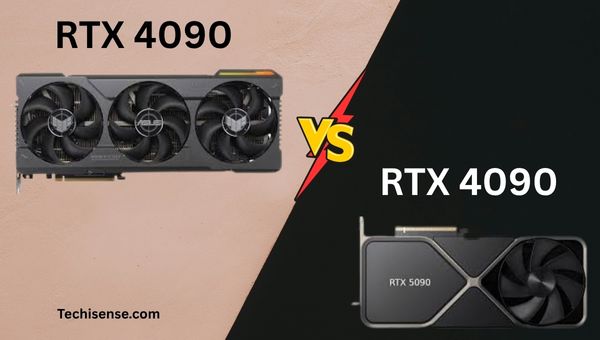
NVIDIA’s GeForce RTX 4090 has long been the benchmark for top-tier graphics performance, but with the arrival of the RTX 5090, the landscape of high-end GPUs is evolving rapidly. Gamers, content creators, and AI professionals are now weighing the benefits of upgrading to the RTX 5090 or sticking with the proven power of the RTX 4090.
This in-depth comparison covers architecture, performance, specs, real-world benchmarks, and value to help you decide which flagship GPU best fits your needs.
The RTX 5090 and RTX 4090 represent the pinnacle of NVIDIA’s engineering for their respective generations. The RTX 5090, built on the new Blackwell architecture, introduces significant enhancements over the Ada Lovelace-based RTX 4090.
The table below highlights the most important specifications:
| Feature | RTX 4090 (Ada Lovelace) | RTX 5090 (Blackwell) |
|---|---|---|
| Release Date | Sep 2022 | Jan 2025 |
| GPU Codename | AD102 | GB202 |
| Process Node | TSMC 4N | TSMC 4NP |
| CUDA Cores | 16,384 | 21,760 |
| Tensor Cores | 512 (4th Gen) | 680 (5th Gen) |
| RT Cores | 128 (3rd Gen) | 170 (4th Gen) |
| VRAM | 24GB GDDR6X | 32GB GDDR7 |
| Memory Bandwidth | 1,008 GB/s | 1,792 GB/s |
| Memory Bus | 384-bit | 512-bit |
| Boost Clock | 2,520 MHz | 2,407 MHz |
| TBP (Total Board Power) | 450W | 575W |
| Launch MSRP | $1,599 | $1,999 |
The RTX 5090’s upgrades are substantial: a 33% increase in CUDA cores, 33% more RT and Tensor cores, a leap to faster GDDR7 memory, and a massive jump in memory bandwidth. These changes translate to improved performance across gaming, AI, and rendering workloads.
Also Read: What is the Main Goal of Generative AI?
The real-world performance gap between the RTX 4090 and RTX 5090 varies by workload. Here’s what the benchmarks and early reviews reveal:
![Nvidia GeForce RTX 4090 vs 5090 [Specs, Performance, Cons] 1 Key Features and Innovations of RTX 4090 vs RTX 5090](https://techisense.com/wp-content/uploads/2025/06/2-45.jpg)
Before diving into pros and cons, it’s important to highlight the unique features that set these GPUs apart.
The RTX 5090’s improvements are clear, but it comes at a higher price and increased power draw. The RTX 4090 remains a compelling option for those who value cost, availability, and thermal efficiency.
RTX 5090 Pros:
RTX 5090 Cons:
RTX 4090 Pros:
RTX 4090 Cons:
The choice between these GPUs often comes down to your specific needs:
Also Read: What Are Tokens in Artificial Intelligence?
If your workflow demands the fastest GPU available—whether for AI, 3D rendering, or ultra-high-end gaming—the RTX 5090 is the new gold standard. Its architectural improvements, expanded VRAM, and next-gen features ensure superior performance and future-proofing. However, the increased price, power draw, and limited early availability may be dealbreakers for some users.
For most gamers and creators, the RTX 4090 still offers remarkable value, excellent performance, and better thermal efficiency. It remains a smart investment for those who don’t need the absolute bleeding edge.
The battle of RTX 4090 vs 5090 highlights NVIDIA’s relentless pace of innovation. The RTX 5090 is a powerhouse, redefining what’s possible in gaming, AI, and content creation, but the RTX 4090 continues to shine as a reliable, high-performance alternative. Whether you prioritize raw speed, value, or efficiency, both GPUs deliver industry-leading capabilities for 2025 and beyond.
Choose the RTX 5090 for maximum performance and future-proofing, or the RTX 4090 for outstanding power and better value—either way, you’re getting the best NVIDIA has to offer.